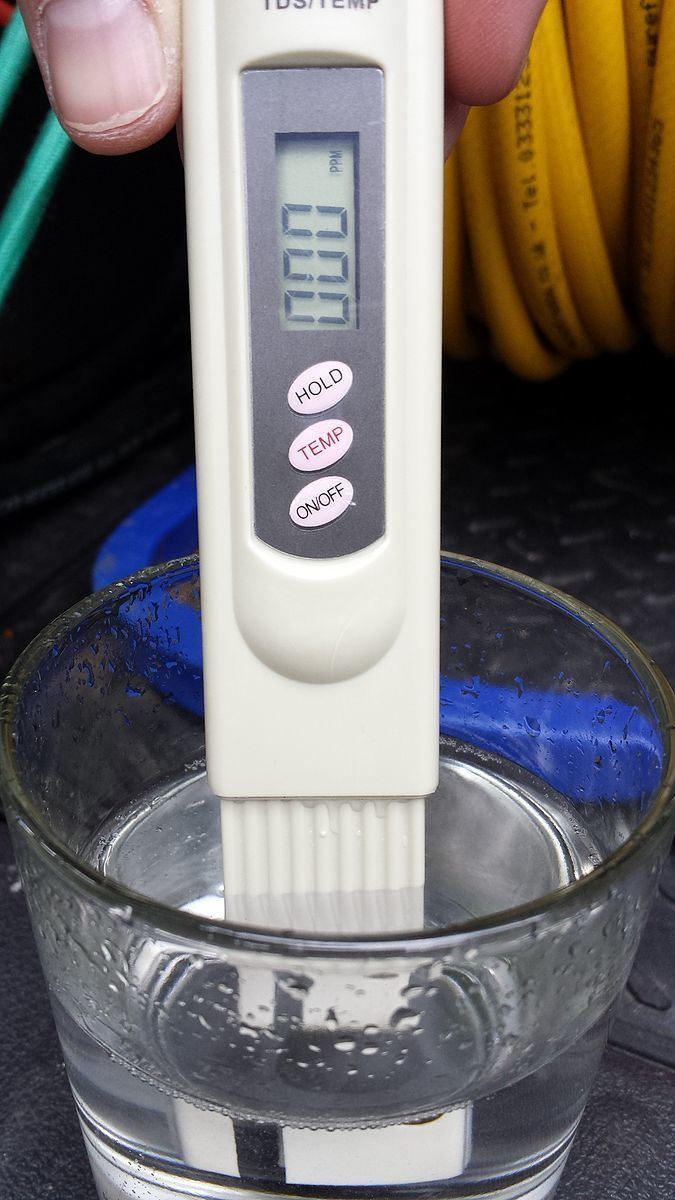 | ||
A TDS Meter indicates the Total Dissolved Solids (TDS) of a solution, i.e. the concentration of dissolved solid particles.
Dissolved ionized solids, such as salts and minerals, increase the electrical conductivity (EC) of a solution. Because it is a volume measure of ionized solids, EC can be used to estimate TDS. Dissolved organic solids, such as sugar, and microscopic solid particles, such as colloids, do not significantly affect the conductivity of a solution.
The most accurate way to measure TDS of water in a laboratory is to evaporate the water leaving behind dissolved solutes as residue and then weighing the residue.
Units of TDS
A TDS meter typically displays the TDS in parts per million (ppm). For example, a TDS reading of 1 ppm would indicate there is 1 milligram of dissolved solids in 1 kilogram of water.
